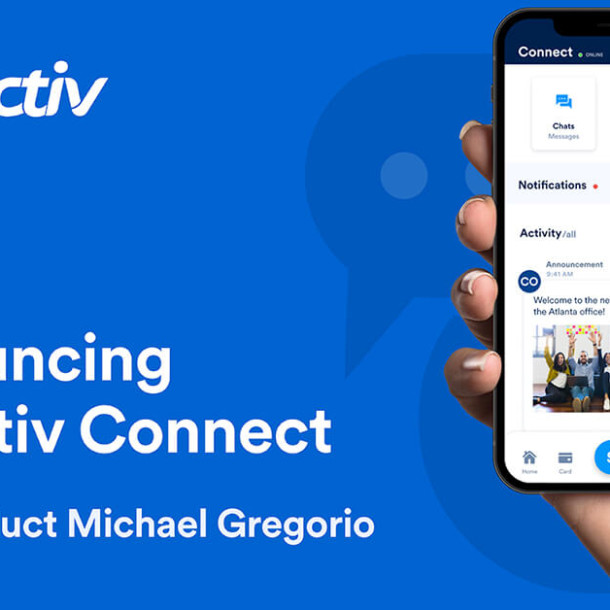Adam Torres:
Hey, I’d like to welcome you to another episode of Mission Matters. My name is Adam Torres, and if you’d like to apply to be a guest in the show, just head on over to MissionMatters.com and click on be our guest to apply. All right. So today I have Sabina Bhatia on the line, and she’s chief customer officer at Payactiv, Inc. Sabina has actually been with Payactiv since they had less than 100 clients, and now they’ve had phenomenal growth, they have thousands. So Sabina’s going to take us through that journey of growth and really how they’re helping their clients succeed. So, first off, Sabina, just want to say welcome to the show.
Sabina Bhatia:
Adam, thank you so much for having me.
Adam Torres:
All right. I should also say so, Sabina is a return guest. So this will be our second time working with each other. So I feel like gotten an old friend back here on the show and excited to get into the content. So first off for those that maybe didn’t catch our first episode, I’ll start with our Mission Matters minute. So Sabina, we at Mission Matters we amplify stories for entrepreneurs, executives and experts, as you know. Sabina, what mission matters to you?
Sabina Bhatia:
Adam, nothing has changed since I joined Payactiv. Most recently, a survey that was published by CareerBuilder found that 78% of Americans today live paycheck to paycheck. Now this includes 9% of those who earn a six figure income, startling. Now, there is a massive opportunity today to help these millions of working Americans who are struggling to support their families, their extended families, and most importantly just themselves. Their livelihood is my life’s work. And that is my mission, Adam.
Adam Torres:
I love bringing mission based executives and entrepreneurs really on the show to share why they do what they do. What wakes them up in the morning? What gets them going to get out there and to fight the fight, to help their clients and really make a difference? So thank you for sharing the mission. So Sabina, you’ve been there since the early days. So, any good story? I like to say, let’s start from the beginning. So, how did all this come about?
Sabina Bhatia:
Sure, Adam. Thank you to our founder and CEO, Dr. Safwan Shah, he invented Earned Wage Access, also known as EWA, and launched Payactiv over a decade ago to improve the financial stability, that same mission that I talked about a few seconds back. So really improving the financial stability and livelihood of the paycheck to paycheck worker. And we consider that paycheck to paycheck worker, the underserved. So we created Payactiv to serve them. Today we are very fortunate to support 1500 plus businesses.
Adam Torres:
Wow.
Sabina Bhatia:
We have them fully engaged to help their employee base, are all in one livelihood platform. And we’ll get into more details on that, but our platform called the Livelihood Platform has a very holistic approach. And the goal there is to make sure that employees are able to avoid a lot of those unnecessary predatory fees, like paying more fees, overdraft fees, late fees. Until today, we have saved more than 400 million.
Adam Torres:
Wait, say that again? How much?
Sabina Bhatia:
Yes we have. So our holistic approach to improving that financial wellness has helped employees save more than 400 million.
Adam Torres:
Wow. Hold on, that’s a big deal, that might be the headline for this article, more than 400 million saved. That’s an amazing stat.
Sabina Bhatia:
It is. And see, that is why Mission Matters. So hopefully that was helpful.
Adam Torres:
And so the big thing here though, is that, that money went somewhere, the employees are benefiting from that. It’s just not a predatory fee, or something that’s just coming out of their check, or something that they’re not getting value from. And that fee also goes into the marketplace, it helps our economy, they’re buying things, they’re buying food, they’re buying, or paying rent, doing other things. So I think it’s just such a great mission overall. And I don’t want to assume that all of the employers watching are, even the employees, understand this situation overall. So maybe give us a little bit of, from your vantage point, of what that paycheck to paycheck workforce looks like and why that’s so important to serve this population, because obviously they’re underserved.
Sabina Bhatia:
Sure, sure. Absolutely. So, Adam, whenever I have a conversation with businesses today and outside parties, I tell them, let’s just stop talking about the pandemic, it’s getting old. That’s all that people talk about. That’s all the reason that people have for not doing X, Y, Z. But unfortunately Adam, we are stuck. The pandemic has created a big problem for us, and it’s actually escalated an issue that we’ve been trying to solve for the longest time. Today the unemployment rate in October was 4.6%.
Adam Torres:
Wow.
Sabina Bhatia:
And there seems to be no hope. Tell me, what do you mean there seems to be no hope? It’s actually good news. Adam, it’s not good news. And the reason being, I’ve always talked to employers saying the value proposition of Payactiv is to help you in retention and turnover. They’re interrupting me today and saying Sabina, we can’t even hire people.
Adam Torres:
Wow.
Sabina Bhatia:
It’s so difficult to hire. So recruitment has become a big issue. Organizations and industries across the board are struggling to fill vacant roles. Now think about last year, all the businesses that suffered, they could not make up their revenue. They have lost a lot. So right now it seems to be a huge opportunity to claw back on some much needed revenue, but no, you also have the great resignation. So I can’t find anyone to fill a role. In addition to that, people are saying, I don’t want to be in front of clients. I don’t want a low paying job. How many people would be willing to work in the healthcare sector and the senior living sector today? It’s tough, because they think about the risk.
Adam Torres:
For sure.
Sabina Bhatia:
We have retail companies, we have logistic companies, they’re all having the same struggle. And so let me go back to what CareerBuilder survey showed us. 78% of Americans currently are living paycheck to paycheck.
Adam Torres:
Wow.
Sabina Bhatia:
So you come into work, you punch in, punch out, but you have to wait to get paid two weeks, sometimes three weeks when you start a new job, that liquidity is what creates the risk of paying all those predatory fees. That lack of liquidity is what makes it very expensive to be poor. And that is the audience we are here to serve.
Adam Torres:
And so, one of the things that I like about Payactiv, and maybe it’s a good time, let’s go further into the platform, is that it’s really, one, it’s a benefit that the employers can offer to really, to improve the quality of the lives of their employees, it’s an awesome benefit. So maybe let’s start with giving us just an overview of the platform overall.
Sabina Bhatia:
Sure. Absolutely. So, it’s time for businesses to relook the benefits that they’re providing to the lower wage worker, the hourly worker. And one benefit that is helping across the board, and it costs the employer nothing, zero, zilch, nada.
Adam Torres:
So, those that are sometimes, oh, well, what is this going to cost me? You’re going into your healthcare benefit. You’re going to something else. And it’s always going up. That’s for sure with that inflation rate, let’s not even get into that one Sabina, but this one costs nothing.
Sabina Bhatia:
Yeah, absolutely. It costs them nothing. It’s called on-demand Earned Wage Access. They’re becoming increasingly important to solve that same problem that I mentioned to you a few minutes back, that liquidity crunch, 79% off Americans living paycheck to paycheck. And we provide that to 1500 plus businesses. The EWA services provide flexible payment model so that employees can access pay they’ve earned, but not yet collected by receiving prepayments in advance of their regular paycheck, typically for a very small fee. Now, why is it important? We ran a survey and this is what’s going to give it relevance. So any employer who did not know this recognize these numbers, 95% of hourly workers are interested in working for an employer who offers EWA.
Adam Torres:
Wow.
Sabina Bhatia:
89% of hourly workers are willing to work longer for an employer that offers EWA. 79% will be willing to switch to an employer that offers EWA.
Adam Torres:
Significant.
Sabina Bhatia:
Why would you not offer EWA? So those are the facts. Those are the facts. And that is the value proposition.
Adam Torres:
I have to piggy back on your question then. Why do you think it’s maybe employers don’t know it exists? I’m just trying to figure out, why? Why have you found? I know it’s different for every employer, but what are some of the reasons you found maybe?
Sabina Bhatia:
Well, Adam, you said wow a few times when I gave you those stats.
Adam Torres:
Yeah.
Sabina Bhatia:
It’s the same thing. Sometimes it’s just unawareness of how hard it is for the lower wage worker.
Adam Torres:
Got it.
Sabina Bhatia:
I’ll give you one story. One of our clients based in Colorado, the CHRO was working really late in the office. She left work around quarter to eight or so, it was pitch dark. She walks to the parking lot, it’s an open air parking lot. And she sees someone sleeping in a car, an old car, broken down car. And at first, I would too, you would too, she got nervous, what’s going on here?
Adam Torres:
Yeah.
Sabina Bhatia:
But then something made her look and she saw that it was actually one of her employees.
Adam Torres:
Oh, wow.
Sabina Bhatia:
… sleeping In the car. She realized that this person probably just didn’t have a home. So by providing access to the wages that they’ve already earned, instead of making them wait to get paid, they can take care of their housing expenses, basic expenses like travel, food, groceries. So the HR leaders, organizations, the C-level suites, the managers, supervisors, everybody is empowered to make that difference, to show that impact that tomorrow this employee will not be sleeping in their car because we saved them from an eviction. So, things like that, those things matter, Adam, they matter.
Adam Torres:
And one of the, I guess we have to explore the other side of this as well. So what happens when, I think the other part of the education piece is, okay, so that particular person maybe didn’t have access to any capital. Then there’s the maybe employees that are a little bit more savvy, or they have, they go to another capital source like a payday place, or something else where there might be some lending practices that make it to where, let’s just say it’s definitely not an even fit, or a fair balance there. Tell me a little bit more about the predatory side of what happens to some employees when maybe they don’t have access to that capital.
Sabina Bhatia:
Sure, sure. So you don’t have access to liquidity. So once again, let’s go back to the pandemic. I’m sorry. I keep telling people not to talk about the pandemic, but I can’t avoid talking about the pandemic.
Adam Torres:
For sure.
Sabina Bhatia:
So during the pandemic, there were two kind of vaccines given, Adam. One was your stimulus checks, to take care of the financial stress. And the other vaccine was for the virus itself. So financial stress actually became that invisible virus. So now when you don’t have liquidity, and you don’t have funds coming with between paychecks, what happens? Remember, your bills don’t follow the schedule of your payroll. I have bills that fall on the eighth, on the 17th, on the ninth, all over the place. So when people don’t have that liquidity, they pay late fees, they pay disconnect fees, they pay reconnect fees, they make administration fees, all those fees. But remember when those fees go to their checking account and there’s no money there, what happens? I pay overdraft fees.
Adam Torres:
Oh, so it’s fee on fee, on fee.
Sabina Bhatia:
Yes. And we’ve done tons of surveys, users today could be paying up to four, five overdraft fees in a month.
Adam Torres:
Which is significant, if it’s also for somebody that’s an hourly employee, let’s say they’re making, I don’t know, $10 an hour, whatever, and just a random number. And let’s say the overdraft fee is now $40, or 39.99, or whatever, that’s…
Sabina Bhatia:
Exactly.
Adam Torres:
… four hours of labor. So half a day of work goes to nothing.
Sabina Bhatia:
Exactly.
Adam Torres:
Doesn’t go to food, doesn’t go to paying down a bill. Doesn’t even go to interest in this case or anything, it just goes to a late fee.
Sabina Bhatia:
Nothing. Exactly, exactly. And so it’s tough, it’s tough. The liquidity crunch has created a big problem. So, we are here to serve those employees that are struggling financially and worse because of the pandemic, but we are not solving just a short term liquidity problem. We want to make sure, see, the whole definition of essential worker change during the pandemic. The way I look at essential worker is if you have to leave your home to earn a living, you are an essential worker.
Adam Torres:
Absolutely.
Sabina Bhatia:
You don’t have to just be in healthcare, or senior living. You could be working at a grocery store. You could be anyone. If you’re an hourly worker and you have to step out of the house, you are an essential worker. So taking care of that short term liquidity, we have that, but I would love to talk to you a little bit about what our livelihood platform is about, because it solves the long term problem of our people.
Adam Torres:
Yeah. And I love your definition by the way of essential worker. And and we are all learning this, the economy and the world are learning this based off the fact that our supply chain shortages right now, you can’t get a package. You can’t get import. So the drivers, all the hourly workers in between this entire supply chain that weren’t maybe always deemed essential, now it’s like, hey, it’s essential. Everything stops if you have to leave your house and somebody has to, and you have to complete a task to keep everything going, to keep this economy going, and keep goods moving. So, love the concept. And I completely agree with you. So yes, by the way, let’s definitely get into the platform. So tell us more about that.
Sabina Bhatia:
Sure. So there are three main teams within the livelihood platform, livelihood, of workers livelihood is our life’s work. But what does the livelihood platform do? So the three teams are, live, live helps workers just live the life they earned. You give them timely access to whatever they’ve earned and avoid all those unnecessary overdraft fees, late fees, disconnect fees, reconnect fees. So, that’s where you have the on-demand Earned Wage Access. So now they are living, getting by taking care of business. Then you have the theme of grow. Now grow helps employees reach their short term and longterm livelihood growth. Businesses just keep telling us, listen, we want to provide a financial wellness tool, not just a liquidity tool. We want more because we want our people to be happy long run. So what we’ve done is we’ve created a goal based savings platform. We have a discount marketplace.
Sabina Bhatia:
There are so many ways a user can manage their finances once they are empowered after taking care of their basic needs. So now comes the third theme, and employees just love this. It’s called connect. So I’ll tell you that at least in the Bay Area, I’m based right here at headquarters in San Jose. And there was an article by Mercury News a few months back, which stated that 70% of those Bay Area employees who can work at home, have no desire to come to work. They don’t want to come to work. So it’s become very competitive, but for employers it’s becoming more and more difficult to stay connected with their people. Poverty workers is one thing, they’re out there, they’re working. How do I connect with them? That’s always been a challenge.
Adam Torres:
For sure.
Sabina Bhatia:
But now it’s become a challenge across the board. So on our platform, we have this service called Connect, and with Connect, our goal is to facilitate this collaboration and sense of community among essential workforce and to connect the employer to the non-desk employees. So the platform in itself serves the people and serves the business. You have to serve the people first. So, that is really what the platform is about.
Adam Torres:
And I think the best part about it is it’s really well rounded. So meaning you have the liquidity aspect, which obviously that’s going to solve the immediate problem, you don’t want someone to, you want somebody to have access to that liquidity so that they can eat, they can pay their bills, things like that, not fall into that cycle of lending, predatory lending or late fees or whatever it is. You don’t want them falling into that cycle. But then one after you’ve helped with the liquidity and some of the immediate need, ideally the employee wants to take the next step and say, okay, now how do I start building some wealth?
Sabina Bhatia:
Exactly.
Adam Torres:
How do I start building my nest egg and growing that? And for a lot of people, that’s the education piece. Maybe they didn’t get that, or maybe they have it, but they have some concepts that don’t necessarily mesh well with what’s going to be best for their situation. So you have that piece, then you’re solving the other part with the connect for the employer so that now the employer can connect better with the employees. But I just feel like between all of these, some of the central themes that seem pretty obvious to me is this validates just common sense why some of the numbers that you said earlier about in terms of retention, or wanting to be an employer that offers a service like this, or that makes just quality of life for the employee at a company that offers these type of services just better.
Sabina Bhatia:
Yes. And Adam think about this, it might sound a little out there, but it is true, your people are helping us build this economy. They’re helping us grow this economy. So put them in the right situation where they can benefit from this economy that they’ve built. So we tell employers that, listen, an employee value proposition is a set of financial and non-financial benefits that a business will offer them. And the business will say, I will give you recognition of time that you put in, your skillset and experience to perform a job. So it’s very transactional, but modern thinking now is, that’s not enough. The employee value proposition moves the concept beyond a simple transaction between two parties. So, now the employee value proposition for an employer is mutually beneficial only if they provide a rewarding system of support, recognition and values that an employer has and can push to everyone in the organization. Now, as a salaried employee, the kind of benefits you might get is not exactly what an hourly worker would get. It’s not working anymore. That is not going to work. So, that benefit needs to be in sync across the board. So, we at Payactiv have built the platform, have the live, grow, connect value proposition for both the employer and employee. And we’ve gone way beyond that, Adam. And we should talk about that. What you do is important, but how you do is even more important.
Adam Torres:
Yeah. Definitely well said. And I get it. And the value proposition, it just becomes obvious when you sit back and look at it, just to recap some things we started this interview with. 400 million saved for employees, that number alone, $400 million is a huge number, understanding that this money’s used for essential items many times if you’re living paycheck to paycheck, it’s essential. So, that money’s getting in hands of people that need it, and people that have earned it, this isn’t charity, it’s their money. So, they’re working for this, you’re just providing liquidity here. So that makes sense then, and then on the employer’s side, the retention, all the other stats you gave, it just seems like it’s just creating a lot of win-win scenarios.
Sabina Bhatia:
Yes. It is. There’s one other special thing, I treat it as special. And that is Payactiv’s mission is not only to achieve this goal of helping those that are in need because of the financial stress and all, but how we are doing it is very important. You might or might not have heard of B Corps. Have you heard about it, Adam?
Adam Torres:
I have not. No.
Sabina Bhatia:
Okay. Let me tell you about it. So in 2015, actually, we became a certified B Corp. Think about a B Corp organization that wants to work towards a trifecta impact. What is the trifecta impact? It is very important to help employers. It is very important to help communities, and it’s very important to make a positive impact on environment. So for us, purpose and profit are equally important. We need to balance that out, and that’s what a B Corp is.
Adam Torres:
And that’s the entity, right? The physical structure, correct? Just to be clear.
Sabina Bhatia:
Yes.
Adam Torres:
Ah, got it. And so, okay. Now I learn something new every day doing this Sabina. I knew a C Corp, but now I have in my docket, the B Corp. So I’m in providing value everywhere here Sabina. So why did Payactiv choose to go that route? I’m just curious, because that’s a significant step in terms of entity selection.
Sabina Bhatia:
We want to do the right thing, and we want to do it right. When it comes to a platform, it comes to our pricing model. It comes to the value proposition that, we are going to give to businesses, to people. We want to make sure we make a measurable impact on all organizations, on all employees. And to communities and the environment. And we thought that why not formalize it? So we became a certified B Corp. So, it’s very important to us that we do the right thing.
Adam Torres:
Mm-hmm. Wonderful. So Sabina, this has been great. It’s always awesome having you on the show, but I do have to ask, so what’s next? What’s next for you, for Payactiv? What do you see happening in the industry? What’s next?
Sabina Bhatia:
It’s simple. I talked to you a little bit about our mission. We are very focused. In 2020, there was 73.3 million hourly wage workers in the U.S.
Adam Torres:
Wow.
Sabina Bhatia:
And that represents 51% of the total workforce.
Adam Torres:
Mm-hmm.
Sabina Bhatia:
That’s where our work is. We have a lot of work to do to take care of them. And we are very fortunate that businesses across the country and globally are very, very supportive of our mission. That’s what’s next. We are going to continue to grow on our platform. We’re going to continue to propagate the value proposition we give and do it the right way. I hope that is helpful.
Adam Torres:
So if somebody’s watching this right now, Sabina, so final question, two part question. If somebody’s watching this and they’re either an HR department or they’re the employer themselves, and they want to learn more. So, first question is, what types of companies typically get the most value out of work with Payactiv? So meaning is it size a company, industry or otherwise, or are you industry agnostic? And how do those employers follow up and learn more?
Sabina Bhatia:
So, other particular businesses, we don’t necessarily look at businesses, we look at people. If you are a business that has hourly workers, it doesn’t matter which industry you are, how big you are, how small you are. We are here to serve you. Our smallest customer has one employee. And our largest customer has hundreds and thousands of employees. So, it doesn’t matter. We are here to serve your people. So we will be here for you. And you can always learn more about us on our website, payactiv.com. And there’s actually a great film we made during the pandemic, actually just before the pandemic, it’s called, It’s About Time. It’s. About. Time. It’s about time we did something, but also we convert time into financial wellness for employees. So there’s a movie, check it out. Itsabouttimethefilm.com is the website. I think you’ll learn a lot more about our mission more than at least what I’ve shared today.
Adam Torres:
Oh, well, I think we’ve learned a lot based off of what you shared. So, I won’t sell that short, but I will say that we will definitely put the links to the websites and the show notes so that our viewers and listeners can just go check out the movie, they can go check out, of course, Payactiv’s main site and learn more. So, Sabina, again, awesome having you on the show today. And to the audience as always thank you for tuning in. If you’re a new time visitor, or a listener, or a viewer, and you don’t know what to expect, just want you to know we bring on mission based entrepreneurs, executives, and experts on, and we have them share their mission, their background, like why they do what they do, why it’s important, how they’re out there making a difference day in and day out. So definitely hit that subscribe button. And we hope to see you back here for the next episode. And Sabina again, really it has been a pleasure. Until the next time, look forward to our next interview.
Sabina Bhatia:
Thank you so much, Adam. Thank you so much for having me.
Watch the full interview here.





